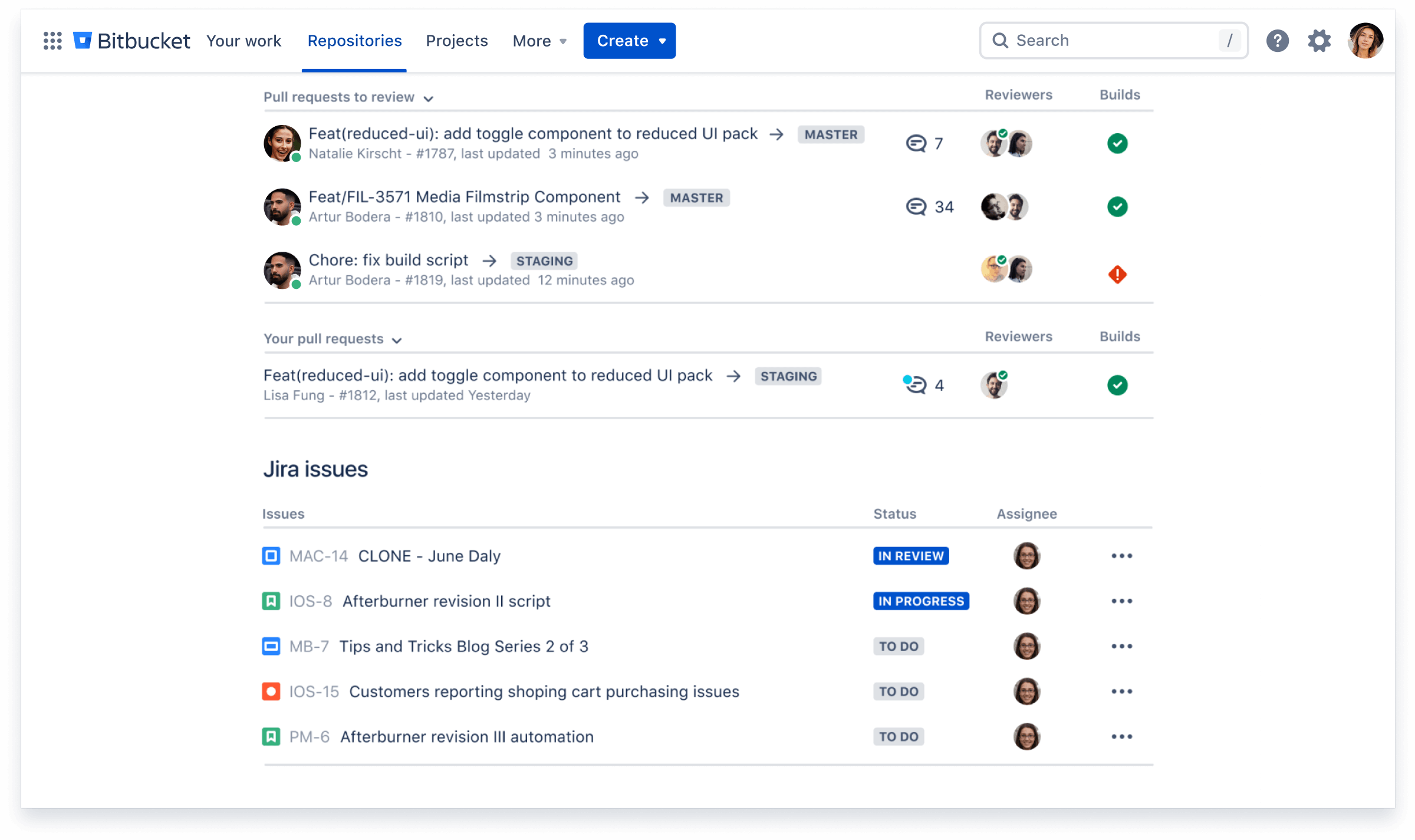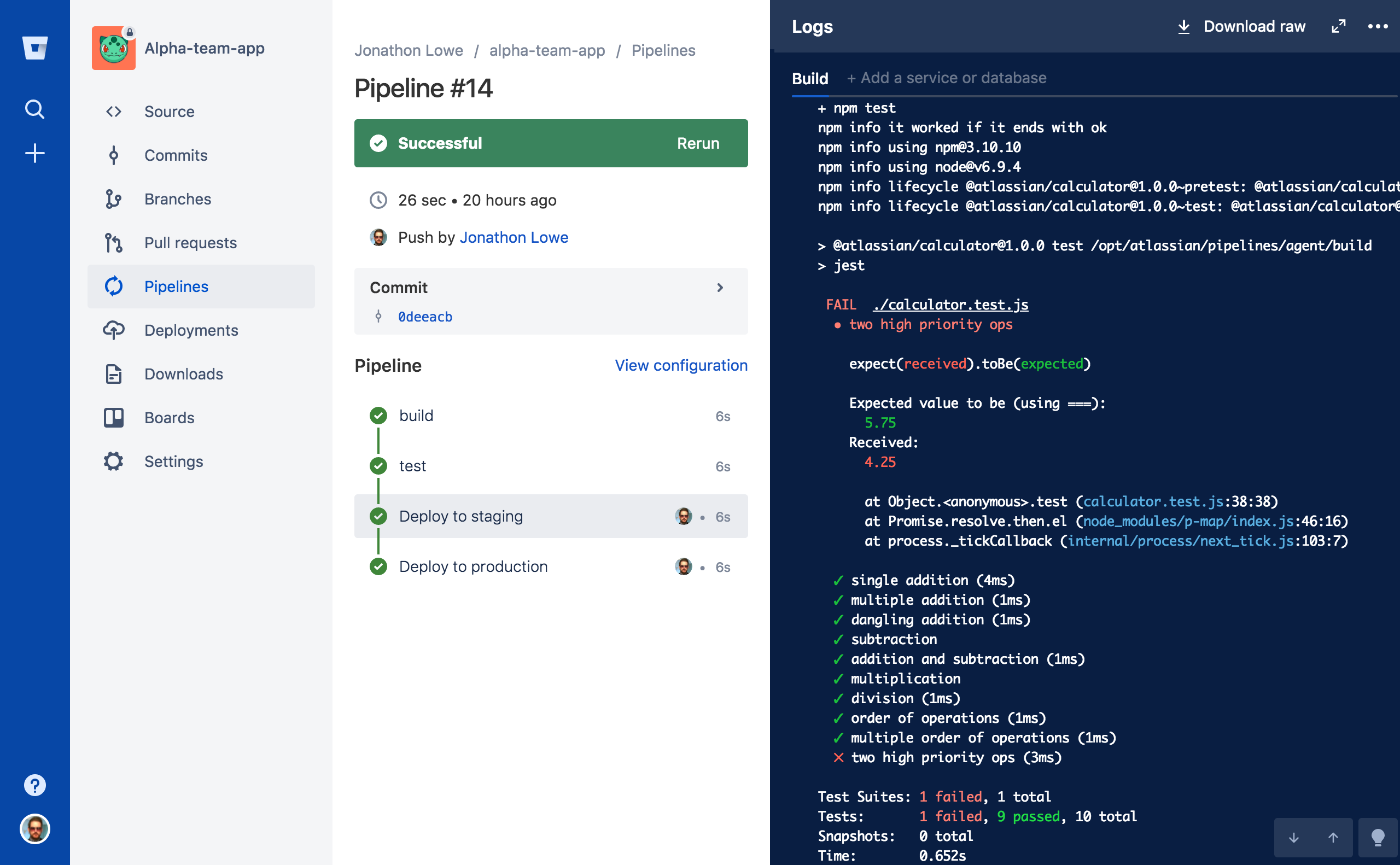Девять лучших инструментов управления конфигурацией для команды DevOps
Инструменты управления конфигурацией — это программные решения, повышающие стабильность и гибкость системы. С их помощью можно автоматизировать управление ИТ-инфраструктурой и ее отслеживание. Команды DevOps используют эти инструменты для выделения, настройки и развертывания программных и аппаратных ресурсов в различных средах.
В этом руководстве рассматриваются преимущества лучших инструментов для управления конфигурацией ПО и то, как они помогают командам DevOps оптимизировать рабочие процессы и осуществлять контроль версий, а также облегчают совместную работу и управление проблемами.
Попробуйте Compass бесплатно
Повышайте удовлетворенность разработчиков, каталогизируйте все сервисы и улучшайте работоспособность программного обеспечения.
Что такое инструменты управления конфигурацией?
Инструменты для управления конфигурацией ПО обеспечивают единообразие и надежность всех этапов разработки и развертывания.
С их помощью можно реализовать в конвейере DevOps следующие возможности.
- Контроль версий. Отслеживайте развивающиеся конфигурации ПО и управляйте ими.
- Автоматизация. Сократите работу над повторяющимися заданиями по настройке и развертыванию конфигураций ПО, а также управлению ими.
- Совместная работа. Предоставьте заинтересованным сторонам централизованную платформу для совместной работы, обмена конфигурациями, отслеживания изменений и разрешения конфликтов.
- Согласованность. Согласовывайте конфигурации в разных средах, чтобы приложения работали предсказуемо в любой из них.
Связанные материалы
Укротите бесконтрольный рост программного обеспечения
СМ. РЕШЕНИЕ
Улучшите процесс разработки с помощью Compass
Преимущества инструментов для управления конфигурацией
Чтобы начать успешно практиковать DevOps, нужны подходящие инструменты. Инструменты управления конфигурацией позволяют командам управлять конфигурациями, чтобы обеспечивать согласованность, надежность и стабильность результатов на протяжении всего цикла разработки и развертывания ПО.
Эти инструменты оснащены надежными средствами контроля версий, способствуют совместной работе и помогают оптимизировать рабочие процессы.
Эти возможности полезны для команд, начинающих практиковать DevOps, поскольку выполняют следующие функции.
- Позволяют четко фиксировать изменения рабочей среды в контрольном журнале и быстро выполнять откат, если в процессе контроля версий возникли проблемы.
- Помогают наладить коммуникацию и плодотворное сотрудничество между участниками команды, чтобы повысить эффективность циклов разработки.
- Позволяют ускорить поставку ПО благодаря оптимизации рабочих процессов.
Девять лучших инструментов для управления конфигурацией
Чтобы подобрать инструменты управления конфигурацией, наиболее подходящие для вашей компании, оцените свои требования, инфраструктуру, компетенции команды, потребность в масштабируемости и сложность среды. Учитывайте возможности каждого инструмента, его удобство использования, масштабируемость и совместимость с существующей инфраструктурой, а также доступную для него поддержку сообщества.
Узнайте о девяти самых известных и популярных инструментах управления конфигурацией и о том, для чего они лучше всего подходят.
Лучшее решение для CI/CD: Bitbucket

Возможности распределенного контроля версий Git делают Bitbucket эффективно интегрированной средой для совместной разработки с использованием запросов pull. Команды могут проверять изменения кода, предлагать модификации и поддерживать структурированный процесс включения обновлений в основную базу кода.
Встроенные в Bitbucket конвейеры непрерывной интеграции и непрерывного развертывания (CI/CD) помогают оптимизировать процесс поставки ПО. Команды могут автоматизировать сборку, тестирование и развертывание приложений, чтобы поддерживать стабильное качество и надежность результатов на всех этапах цикла разработки.
Лучшая система контроля версий: Git
Команды, освоившие Git, могут вместе с кодом добавить в репозиторий данные для управления конфигурацией, чтобы получить целостное представление о развитии всего проекта.
Благодаря единой истории изменений командам проще управлять конфигурациями при обновлении кода. Такой подход облегчает совместную работу, расширяет возможности отката и гарантирует согласованность в разных средах.
Изучите Git с помощью Bitbucket Cloud.
Используйте Bitbucket Cloud, чтобы освоить Git. Вы сможете работать с важнейшими функциональными возможностями, такими как создание репозиториев, ветвление, слияние и запросы pull, а также понять стратегии контроля версий и принципы использования конвейеров для непрерывной интеграции и развертывания в среде, ориентированной на совместную работу.
Лучшее решение для развертывания приложений: Ansible
Благодаря своей универсальности и простоте Ansible отлично подходит для различных сценариев развертывания приложений и управления конфигурацией. Ansible поможет в следующем.
- Оптимизация процесса развертывания за счет автоматизации настройки и конфигурирования приложений в различных средах. Этот инструмент также позволяет эффективно управлять развертыванием веб-серверов, баз данных и промежуточного ПО.
- Удобное управление конфигурацией благодаря согласованию конфигураций по всему парку серверов или компонентам инфраструктуры. Ansible выполняет такие задачи, как обновление конфигураций установленного ПО и единообразное применение политик безопасности на нескольких машинах.
Лучшее решение для автоматизации инфраструктуры: Chef
В Chef используется IaC-обработка, позволяющая создавать, выделять и обслуживать компоненты инфраструктуры с помощью удобочитаемого и понятного кода. Chef предоставляет следующие возможности.
- Оптимизированное автоматическое управление инфраструктурой. С помощью этого инструмента пользователи могут применять целостный подход, чтобы эффективно автоматизировать задания по выделению ресурсов, конфигурированию и управлению.
- Внутренне согласованная инфраструктура. Chef позволяет командам, обходясь меньшим количеством ручных операций, единообразно внедрять изменения, применять политики и управлять конфигурациями в разных средах.
- Интеграция с Atlassian. Решение Chef доказанно помогает управлять сложными инфраструктурами, повышает гибкость и способствует эффективной совместной работе команд.
Лучшее решение для управления крупномасштабными конфигурациями: Puppet
Puppet — это мощный инструмент управления конфигурацией, известный своими широкими возможностями управления сложными инфраструктурами и их обслуживания. С Puppet команды получают следующие возможности.
- Масштабируемость и централизованный контроль с помощью архитектуры «мастер — агент». Администраторы могут эффективно управлять тысячами узлов с центрального сервера Puppet.
- Возможность управлять большим количеством узлов, сохраняя при этом взаимную согласованность и эффективность масштабных ИТ-сред.
Лучшее решение для автоматизации рабочих процессов: Bitbucket Pipelines

Bitbucket Pipelines — это интегрированное решение CI/CD, позволяющее автоматизировать рабочие процессы и ускорить поставку ПО непосредственно в среде репозитория Bitbucket. Возможности Bitbucket Pipelines перечислены ниже.
- Выявление проблем на ранних этапах цикла разработки благодаря настройке автоматических процессов, запускаемых изменениями кода. Сюда входит выполнение тестов, компиляция кода или его статический анализ.
- Автоматическое развертывание приложений в различных средах. Благодаря настраиваемому развертыванию команды могут без дополнительных усилий отправлять изменения в раздел проиндексированных файлов или рабочую среду сразу после прохождения тестов. При этом повышается скорость и надежность поставки.
Лучшее решение для высокоскоростной и масштабируемой работы: SaltStack
SaltStack — это мощный инструмент для автоматизации и управления конфигурацией, известный своей исключительной скоростью работы, масштабируемостью и универсальностью. Высокая скорость SaltStack особенно эффективна при управлении крупномасштабными инфраструктурами. SaltStack помогает командам делать следующее.
- Создавать пользовательские конфигурации, называемые состояниями, с помощью YAML или Jinja. Эти конфигурации определяют желаемое состояние системы, облегчая управление конфигурацией, установку ПО и обновление системы на различных платформах.
- Быстро реагировать на изменения или проблемы в событийно-ориентированной архитектуре SaltStack. Реагирование на события, запускаемые в инфраструктуре, происходит в режиме реального времени.
- Организовывать сложные рабочие процессы и выполнять команды в распределенных системах с высокой скоростью. Это идеальный вариант для управления крупными кластерами или облачными средами.
Лучшее решение для управления проблемами: Jira Service Management
С помощью Jira Service Management команды разработчиков, ИТ и бизнес-команды могут ускорить свой рабочий процесс. Процессы этого решения на базе Jira позволяют оптимизировать управление проблемами и инцидентами и включают следующее.
- Ведение журналов, отслеживание и быстрое разрешение инцидентов с помощью настраиваемых рабочих процессов. Пользователи могут создавать и приоритизировать инциденты, вести совместную работу над решениями и делиться обновлениями. Jira Service Management помогает оптимизировать разрешение инцидентов, ускорить реагирование и свести к минимуму время простоя.
- Выявление основных причин повторяющихся инцидентов с помощью функциональных возможностей управления проблемами. Команды могут добавлять ссылки на связанные инциденты, анализировать основные причины и внедрять долгосрочные решения.
- Поддержка совместной работы команд с помощью обновлений в режиме реального времени, отслеживания статусов и централизованных каналов связи. Все участники остаются в курсе событий и могут согласовывать свои действия, что положительно сказывается на командной работе и эффективности в целом.
- Доступ к единой платформе для отслеживания задач, совместной работы и обмена знаниями благодаря интеграции Jira Service Management с такими инструментами Atlassian, как Jira Software и Confluence. Настраиваемые рабочие процессы и правила автоматизации можно адаптировать к потребностям конкретной компании.
Лучшее решение для оркестрации контейнеров: Kubernetes
Kubernetes — это платформа оркестрации контейнеров с открытым исходным кодом, ставшая настоящим прорывом в развертывании и масштабировании приложений, а также управлении ими. Kubernetes позволяет эффективно планировать и выполнять развертывание контейнеров в кластере машин. Управление размещением рабочей нагрузки помогает оптимизировать использование ресурсов и обеспечить высокую доступность. К возможностям Kubernetes относится следующее.
- Автоматическое масштабирование количества контейнеров в зависимости от спроса или заданных показателей. С Kubernetes приложения могут обрабатывать изменяющиеся рабочие нагрузки без ручного вмешательства.
- Встроенные механизмы обнаружения служб и балансировки нагрузки, основанные на эффективном распределении сетевого трафика между контейнерами. Благодаря этому поддерживается надежность и постоянная доступность приложений.
- Отслеживание состояния контейнеров и автоматический перезапуск либо замена экземпляров со сбоями. Благодаря такой возможности самовосстановления время бесперебойной работы и надежность приложений остаются высокими.
Узнайте больше об инструменте Kubernetes и о том, каким образом он поддерживает множество контейнерных сред выполнения.
Как интегрировать Bitbucket с другими инструментами разработки ПО
Bitbucket эффективно интегрируется с инструментами Jira, такими как Jira Software и Jira Service Management, что упрощает отслеживание задач и совместную разработку. Разработчики могут ссылаться на ветки, коммиты и запросы pull, находящиеся в Bitbucket, а также привязывать их непосредственно в Jira, чтобы лучше отслеживать изменения кода и задания.
Bitbucket также интегрируется с Confluence. Команды могут встраивать репозитории, запросы pull и фрагменты кода Bitbucket прямо на страницы Confluence. Эта интеграция способствует обмену знаниями и эффективной совместной работе, а также помогает поддерживать в актуальном состоянии документацию по проекту.
Bitbucket также можно объединить со встроенным инструментом CI/CD, Bitbucket Pipelines. Такая интеграция позволяет автоматизировать процессы сборки, тестирования и развертывания непосредственно из репозиториев Bitbucket. Разработчики могут определять и запускать конвейеры в Bitbucket, чтобы изменения кода плавно проходили все этапы вплоть до развертывания, и одновременно обслуживать конфигурации на той же самой платформе.
Интеграции в рамках экосистемы Atlassian способствуют слаженной работе команд и беспрепятственному взаимодействию между такими процессами, как управление проектами, ведение документации, написание кода и развертывание. Они позволяют оптимизировать рабочие процессы, а также повышают прозрачность и эффективность совместной работы на протяжении всего цикла разработки ПО.
Настройте эффективное управление конфигурацией с помощью Bitbucket
Bitbucket представляет собой комплексную платформу для управления конфигурацией. На этой платформе команды могут одновременно с управлением кодом обслуживать, отслеживать и контролировать конфигурации в репозиториях. Bitbucket помогает командам выполнять следующие задачи.
- Внедрение совместных рабочих процессов. Команды могут создавать ветки, вносить изменения и отправлять запросы pull для конкретных конфигураций.
- Взаимное согласование конфигураций в разных средах. Благодаря системе контроля версий команды могут без труда воспроизводить конфигурации в средах разработки, тестирования, разделе проиндексированных файлов и рабочей среде, чтобы исключить расхождения и поддерживать единообразие.
- Улучшение воспроизводимости, простое устранение проблем и повышение стабильности ПО. Можно повысить надежность и удобство сопровождения программных систем.
Инструменты управления конфигурацией, такие как Bitbucket, помогают взять лучшее от DevOps, а именно стабильность, масштабируемость, отслеживаемость, а также возможности автоматизации и совместной работы.
Управление конфигурацией позволяет повысить скорость и надежность развертываний и работать в согласованной и контролируемой среде на протяжении всего цикла разработки ПО.
Инструменты управления конфигурацией: часто задаваемые вопросы
Как инструменты управления конфигурацией повышают эффективность совместной работы в командах разработчиков ПО?
Инструменты управления конфигурацией в DevOps помогают разработчикам ПО работать эффективнее вместе благодаря структурированной платформе для контроля версий, эффективной проверки кода и создания совместных рабочих процессов.
- Контроль версий. Возможности контроля версий таких инструментов, как Git, подходят как для кода, так и для конфигураций. Они позволяют вести историю изменений, с помощью которой участники команды могут отслеживать модификации, возвращаться к предыдущим версиям, если это необходимо, и понимать, как развиваются конфигурации с течением времени.
- Проверки кода. Участники команды могут проверять конфигурации и изменения кода и оставлять о них отзывы. Возможности проверки кода позволяют проводить обсуждения, выявлять потенциальные проблемы, предлагать улучшения и обеспечивать соответствие конфигураций рекомендациям и принятым стандартам.
- Совместные рабочие процессы. С помощью инструментов для управления конфигурацией команды могут систематически создавать ветки, управлять изменениями и сливать обновления. Разработчики могут независимо работать над конфигурациями в своих ветках и беспрепятственно сливать их, сводя к минимуму конфликты. Кроме того, эти инструменты интегрируются с конвейерами CI/CD для автоматизации тестирования и развертывания.
Как начать использовать Bitbucket для управления конфигурацией?
Для Bitbucket предоставляются исчерпывающие руководства, обучающие материалы и документация. Кроме того, вы можете ознакомиться с онлайн-материалами, видео и форумами сообществ, чтобы получить больше информации и узнать об опыте других пользователей. Чтобы использовать Bitbucket для управления конфигурацией, сделайте следующее.
Шаг 1. Создайте новый репозиторий в Bitbucket для хранения файлов конфигурации.
Шаг 2. Загрузите или отправьте файлы конфигурации в репозиторий. Хорошо их упорядочьте и используйте рациональные правила именования для удобного доступа и управления.
Шаг 3. Используйте ветвление для управления разными версиями или средами. Создавайте ветки для конкретных изменений или обновлений, чтобы изолировать работу и предотвратить конфликты.
Шаг 4. Предоставьте соответствующие права доступа и разрешения в рамках Bitbucket. Используйте запросы pull для проверки и слияния изменений конфигурации, обеспечивая контролируемый рабочий процесс.
Шаг 5. Ведите четкую документацию и добавляйте комментарии к коду или файлам конфигурации. Это облегчит понимание и отслеживание данных.
Шаг 6. Автоматизируйте процесс развертывания, запустите тесты и примените конфигурации в разных средах на основе триггеров (например, коммитов или слияний).
Шаг 7. Отслеживайте изменения, ведите историю и проводите периодические проверки. Используйте такие возможности, как отличия, для сравнения версий и определения модификаций.
Шаг 8. Используйте возможности обеспечения безопасности Bitbucket. Применяйте средства контроля доступа, включите двухфакторную аутентификацию и регулярно проверяйте права.
Поделитесь этой статьей
Следующая тема
Рекомендуемые статьи
Добавьте эти ресурсы в закладки, чтобы изучить типы команд DevOps или получать регулярные обновления по DevOps в Atlassian.

Сообщество Compass

Обучающее руководство: создание компонента
